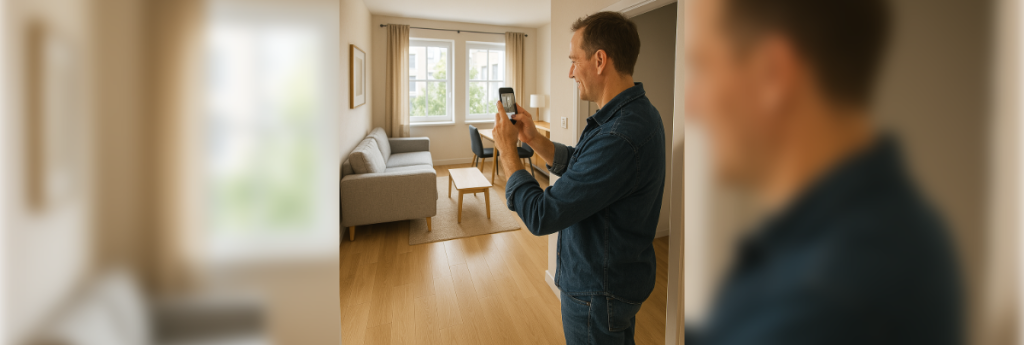By Austin B. Quinn
July 9, 2025

California residential landlords will need to adapt to several new changes affecting tenant security deposits this year. The new law, Assembly Bill 2801 (AB 2801), aims to reduce disputes by requiring landlords to collect photographic evidence and communicate the reasons behind each charge.
AB 2801 creates new rules affecting cleaning, repairs, written explanations of charges, and collecting photographic evidence—all of which significantly increases the burden on the landlord in collecting against a security deposit, and further limits what landlords can charge against a security deposit. This will have the greatest impact on multi-unit complexes with tenants regularly moving in and out.
The Cleaning Rules
The new rules seek to reduce the frequency of charges against security deposits for cleaning. A landlord cannot require a tenant to pay for professional carpet cleaning or other professional cleaning services unless reasonably necessary to restore the premises to its condition at the beginning of the lease term.
Many landlords in California clean carpets and other surfaces between tenants. Previously, a landlord might have asked a tenant for a professional cleaning receipt or proof that the tenant had cleaned the unit personally, and if the tenant could not prove that this had been done, the landlord could charge the tenant for professional cleaning.
Now, after AB 2801, landlords should carefully examine the carpet and other surfaces both before and after the tenancy. If there are stains or damage, a landlord can arrange for cleaning and charge the tenant while providing a written explanation. But if the premises still looks clean, and professional cleaning would not be “reasonably necessary to return the premises to the condition it was in at the inception of the tenancy,” exclusive of ordinary wear and tear, then the landlord cannot charge the tenant for cleaning without running afoul of AB 2801.
The Photographic Evidence Rules
Landlords must now take photographs of the premises to track its condition. Beginning April 1, 2025, a landlord must take photographs of the premises within a reasonable time after the tenant has moved out, but before any repairs or cleanings have taken place that the landlord will charge against the security deposit. Landlords must also take photographs of the premises within a reasonable time after the repairs or cleanings are completed.
If the landlord charges the tenant, the landlord must provide the photographs (for example, by email, mail, online link) along with a written explanation of the cost of the repairs or cleanings. These must be sent to the tenant no later than 21 days after the tenant vacates the premises, but not earlier than the date either the landlord or tenant provides a notice to terminate the tenancy or 60 days before the expiration of a fixed term lease.
For example, if a tenant dropped a dish and damaged a glass oven door, the landlord should first take a picture of the damaged door as it exists, have the repairs done, then take another photograph of the finished repairs. Then, when a charge is made, the landlord must send the tenant those photographs alongside a written explanation.
Additionally, for tenancies beginning on or after July 1, 2025, landlords must take pictures of the premises in general before the tenant moves in.
In summary, if a tenant is charged for any item of damage, the tenant must be given: (1) a photo of the property before move-in (for tenancies beginning on or after July 1, 2025); (2) a photo of the damage; and (3) a photo post-repair. There is an exception for total repair or cleaning costs that do not exceed $125.
Consequences of Noncompliance and Rules for Military Service Members
The penalty for failing to comply with AB 2801 is steep—specifically, failing to comply with the new rules in bad faith will render the landlord unable to claim any amount of the security deposit. Retaining the security deposit in bad faith may lead to further penalties against the landlord.
For military service members, as of April 1, 2025, if a landlord charges a service member with a higher than usual or higher than advertised security due to credit score, credit history, housing history, or other factors specific to the service member, the landlord must provide a written statement on or before the date the lease is signed describing the higher security and explaining why it’s being charged. The additional security must be returned to the tenant within six months after the tenant takes possession, provided the tenant is not in arrears for rent during that period. The lease must also specify the date for return of the additional security amount.
If you have any questions regarding the new rules, please feel free to contact Austin Quinn at aquinn@hechtsolberg.com or Sadaf Behdin at sbehdin@hechtsolberg.com.

